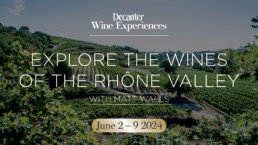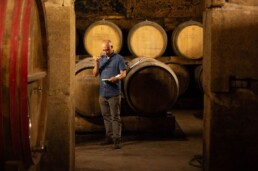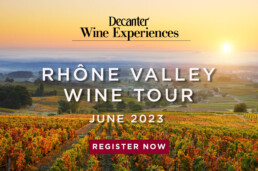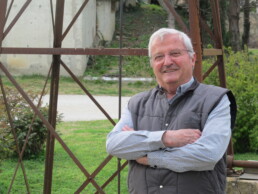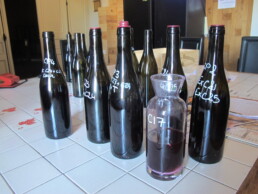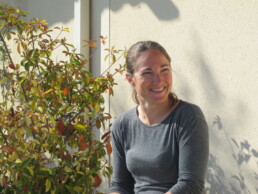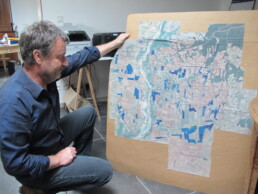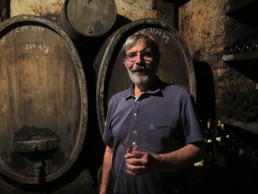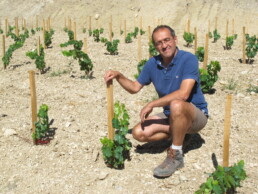2024 Decanter Rhône Readers Trip - bookings now open
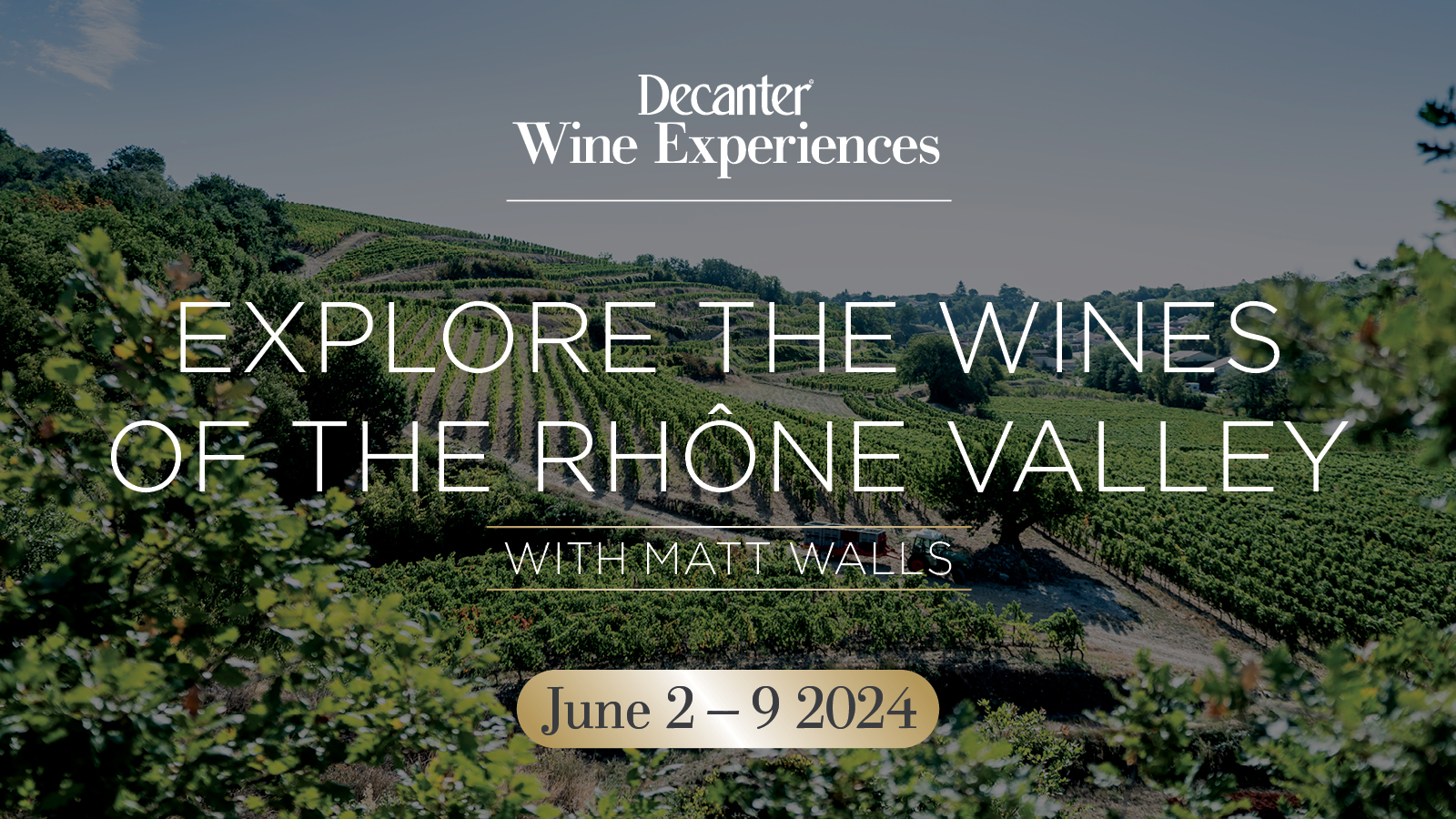
This year's Decanter Rhône Readers Trip is now open for bookings!
This is the third year in a row that we've put together a Rhône Tour for Decanter readers, and I've added a few new estates to keep it fresh. We'll be vising some of the greatest estates in the region as we travel from Lyon down to Avignon, eating at some of the best restaurants and basking in the Provencal sunshine.
We keep numbers strictly limited so it's worth registering your interest straight away - check out this link for the full brochure and booking details. The past two years have been great fun (with some guests booking every year) so give it some thought!
2022 Rhône Report – now available!
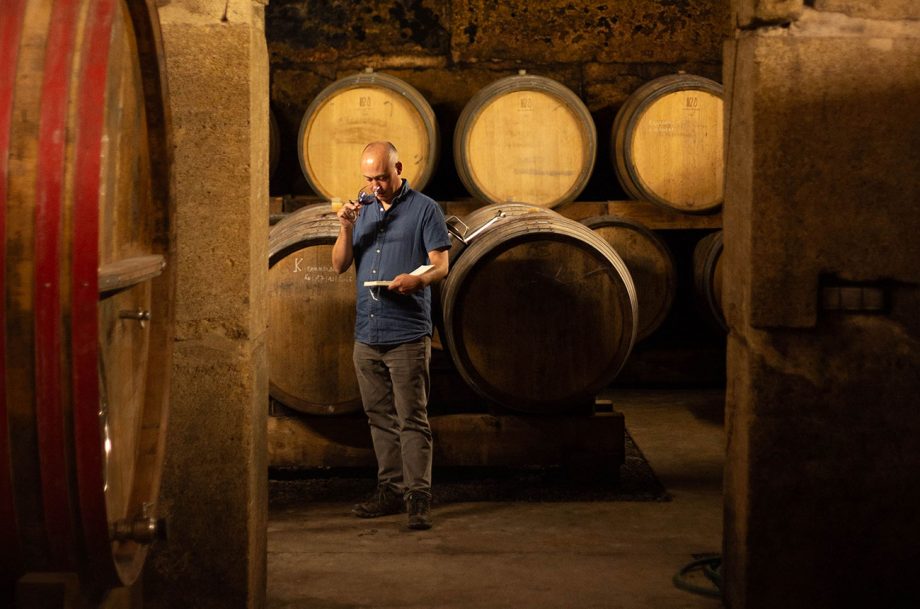
The result of three weeks in the Rhône and tasting over 1,200 wines, my full report on the 2022 vintage is now available on decanter.com.
It contains a general introduction to the vintage in both the Southern and Northern Rhône, and more focused sections on all the different crus. Not to mention full tasting notes and scores on the 400 most notable wines of the year, across a variety appellations, styles, colours and budgets.
The 2022 vintage broke several weather records – it was one of the hottest and driest since records began. But if you’re expecting jammy, boozy monsters then think again. Vines often went into ‘security mode’ due to the extreme conditions and stopped ripening – so often the wines are less ripe and alcoholic than a typical year.
Both the south and north faced similar conditions, making for a very mixed year in terms of quality… but some brilliant wines.
If you’re considering buying some 2022s, it’s worth knowing which wines excelled and which ones didn’t – subscribers to Decanter Premium can click here, or you can read edited versions on the Northern and Southern Rhône in the February and March editions of the magazine.
Photo credit: Luke Carver
Decanter readers trip to the Rhône - we're doing it again in 2023!
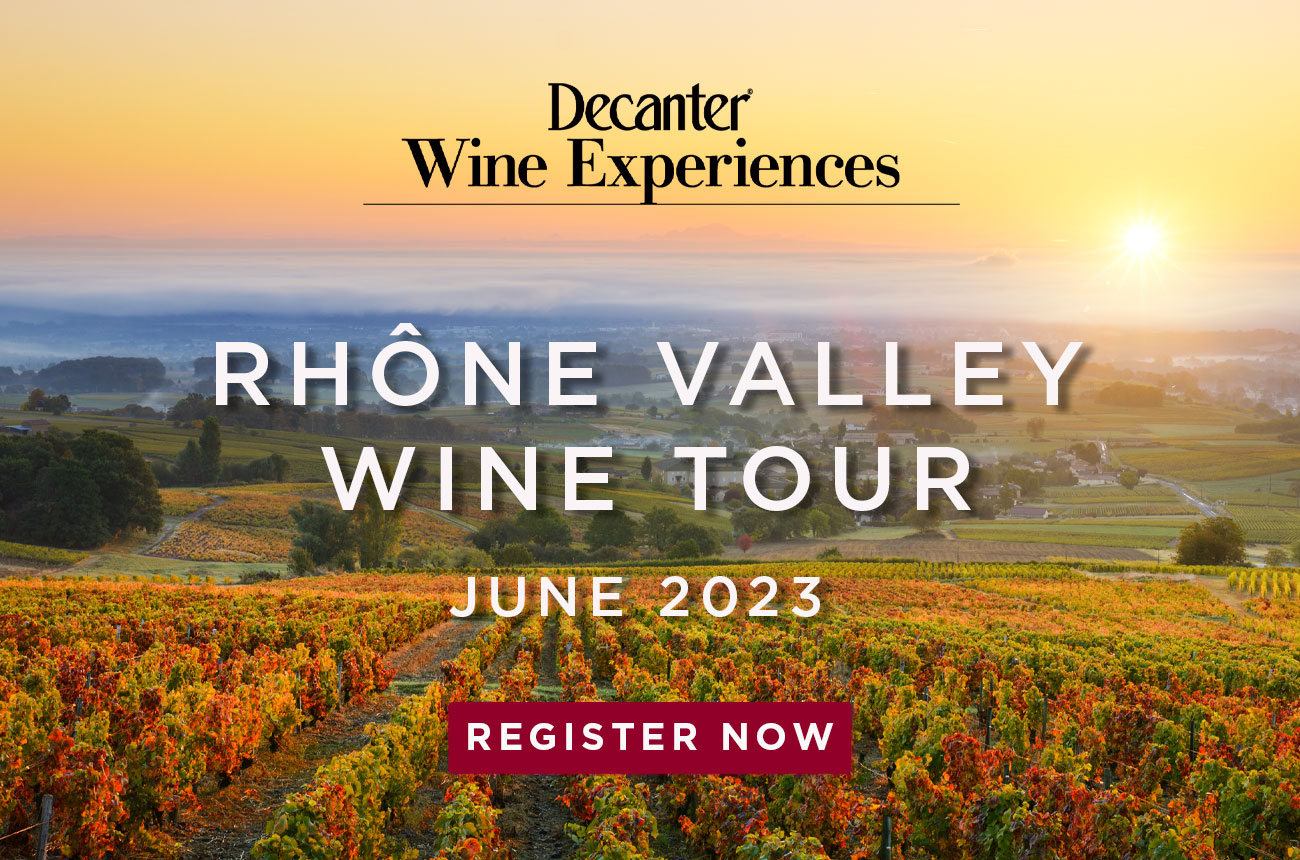
Last year, Decanter asked me to imagine the perfect trip to the Rhône Valley, including the very best winemakers, the finest restaurants, and a smattering of other fun visits and sights. So I put it down on paper - and they turned it into reality for a group of readers.
It was a great success, so we've decided to do it again this year! I'll meet you in Lyon, and we'll work our way down the Rhône, stopping off at producers including Pierre Jean Villa, Domaine Alain Voge and Chapoutier in the north; Clos du Caillou, Domaine Montirius and Domaine des Bosquets in the south.
Needless to say we'll be staying in some beautiful hotels and eating at some of the region's best restaurants along the way.
You can find out more about it, download a detailed brochure and book tickets here.
We're limiting numbers to no more than 20 people. It was great fun last year, so if you like the sound of it, don't hesitate to get in touch!
Interview with Jean-Louis Grippat, former winemaker in Saint-Joseph and Hermitage
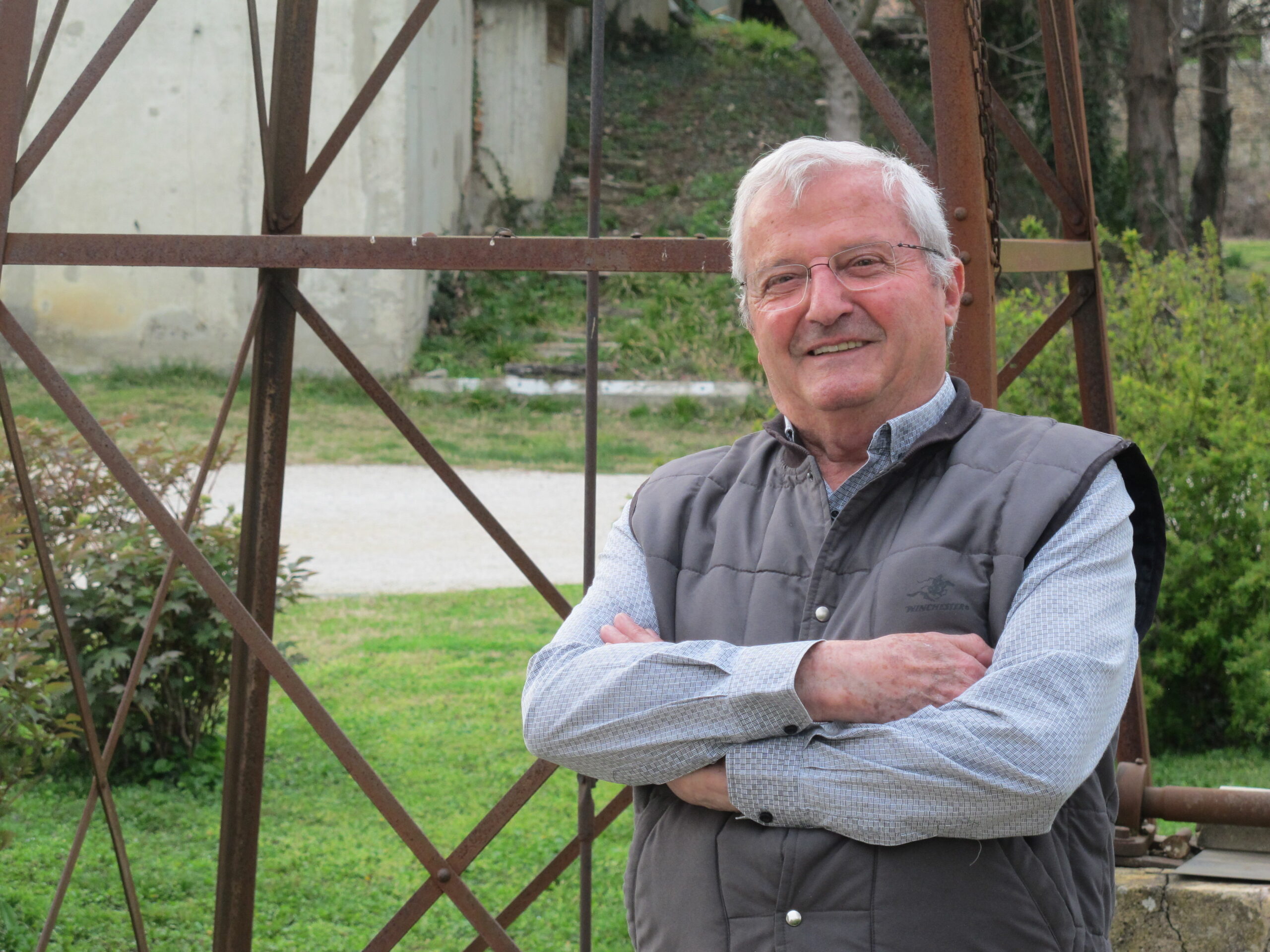
Interview with Jean-Louis Grippat at his home in Tournon, 20th March 2020.
Edited for clarity and brevity.
Can you tell me a bit about the history of your estate?
I took over from my parents. My father died when I was relatively young. But the domaine continued; my mother carried on with a member of staff, and after my studies I joined her in 1956. There were still some fruit trees but I specialised in wine. I had parcels in Saint-Joseph and Hermitage. Very little Hermitage, a hectare and a half in Les Murets. Mostly white, I had very little red. And 6ha in Saint-Joseph; the lieu-dit Saint-Joseph, the Vignes de l’Hospice and Le Clos. I retired in 2001.
You sold your parcels to Mr Guigal didn’t you? Why did you choose the Guigals?
Yes. Firstly because they offered a good price! You only sell once. But it’s not the main reason. The main reason is the quality of their work, and also to open up the market a bit.
Talking about Saint-Joseph, does the appellation have a leader of sorts?
You’d have to go back. There was a group that made some studies to improve the quality of the wine – bottling, tasting, we’d taste and criticise the wines between us with a consultant oenologist. And we progressed a lot. In Cornas there was Clape, Voge; in Mauve, Bernard Gripa, Maurice Courbis, Pierre Gonon, Gustave Coursoudon, Raymond Trollat, and some others whose names I forget.
What were the faults that you found at the time?
Volatile acidity. Lack of cleanliness. A lot of faults!
And brett?
We still didn’t recognise it. Identifying brett is very recent, we didn’t know what it was. The same as malolactic – that was the 1970s, very recent. Our wines would referment in spring, we didn’t know what it was. You’d just keep the wines a year or two in barrel to stabilise it naturally. Now we know it’s malo.
Even 15 years ago people talked about Cornas as having an animal side.
Yes, horsey. That was part of the perfume, the clients accepted because they were used to it.
Now when I taste Cornas, I taste brett very rarely. Are we actually missing something now? Was it the real Cornas, or was it a fault?
No, it wasn’t a fault, it was part of the aroma, people liked it! Now it’s more on the fruit than these more unusual aromas.
Now the style is to be totally clean, to have no brett at all.
But if you continue like that, you’ll end up with a sterile wine. Now commerce dictates a wine must be stable, that it can withstand transport. Clients rarely have cellars so it needs to be drinkable young. Wines need to be easier to drink, not too acidic, not too tannic. The opposite of what it was before. The way of life of today’s consumer has changed the way in which wine is made.
It’s a bit of a shame.
Yes, in a certain sense. But we’ve gained in finesse, in perfume, in subtlety.
Your wine was known for its finesse.
Well I don’t like wines that are too alcoholic and I don’t like new oak. And we make the kind of wines we like ourselves, right? Unconsciously. The point at which a son takes over from his father, the wine is no longer the same.
And the style of wine here, is it going in a good direction?
It’s good, but it’s getting a bit standardised, there’s not much difference between one wine and another. Before, there was a lot more difference. Even between appellations, between Cornas and Saint-Joseph the wines would be completely different.
To buy a copy of my latest book, Wines of the Rhône, please click here.
Interview with Philippe Cambie, consultant winemaker

Philippe Cambie, who sadly died on 28th December 2021, spent his life working in wine and was the best-known winemaking consultant in the Rhône, having worked at ICV Groupe since 1998. He lived in Châteauneuf-du-Pape and worked with some of the biggest names in the appellation. He also co-owned Domaine Calendal in Plan de Dieu with Gilles Ferran of Domaine des Escaravailles.
The following is an interview I conducted with him on 21st May 2020 via Zoom, and is edited for clarity and brevity. Rest in peace, Philippe.
Have you noticed a change in style over the course of your career?
The evolution of the appellation is also the evolution of the people. Before, there weren’t many vignerons who had travelled and discovered the wines of the world. Now there’s a lot of young people that have studied, worked in wine elsewhere. They have discovered great wines, experienced them. And the new generation of winemakers – all of whom want to do better, to improve their viticulture, to improve their winemaking – have produced even more great wines and further revealed the quality of the appellation. And Robert Parker – he opened people’s minds. He didn’t change the wines. He simply changed the impression that vignerons had of their own appellation.
Does getting a good score with critics such as Robert Parker increase prices?
Less and less now, that was mostly in the 2000s; in 1998, 1999, 2000, 2001 it really helped sales. Today it’s not the same but it does boost things a bit. In Châteauneuf we’re distant from the capital, from Paris. And we’ve never had a big commercial presence in Paris, unlike some regions that are closer, so we’ve always relied more on export markets.
Ten years ago, we didn’t talk much about the importance of the oenologist, but it seems we hear more and more about them these days.
I think because the job has evolved. The first oenologues were just pharmacists that helped winemakers manage any problems. It’s a bit like medicine; originally it was to treat, but now it’s more about prevention. Oenologues today are there to accompany the winemaker, to walk alongside them. And now domaines all have in-house winemakers, whether children of the owners or staff, so there’s already a scientific base. I’m not there to say do this or do that, the role is more to offer advice, to give opinions and to accompany them along their own path.
I suppose there are different levels at which you can work with a consultant winemaker, starting just with sample analysis.
Yes, that’s obligatory now. Everybody works with a lab and an oenologue on that level – or you can work more closely, like a member of the domaine. But it’s not the same work with someone starting out as with someone that has 30 years’ experience. I’ve learnt a lot from the older generation of Châteauneuf winemakers myself. André Brunel was someone that taught me the most. I teach and guide, but I’m still learning.
Is it true to say that all oenologues have their own particular style of making wine?
If it’s a smart person with a good relationship with the winemaker, he’ll accompany the vigneron to develop their own identity. Not all oenologues are the same. Some can be dictatorial. That’s not my philosophy. I’ve always said if you look in my cellar, you’ll see 200 different wines. It’s like a taster or a journalist, they’ll prefer one style of wine over another. It’s human. The closest style to what I like is Calendal.
So is that the Cambie style?
It’s not the Cambie style, it’s the style of wine I like. If you taste Calendal, it’s got nothing to do with any other wine. Elegance, finesse, not too concentrated. But I like all styles of wine, California, Washington, Spain, Burgundy… Cabernet isn’t my thing so much, but old Bordeaux can be magnificent. What I don’t like is brett, anything animal. That I can’t stand. Or very oxidative styles, outside of Jura.
Do winemakers say to themselves ‘I want to work with Philippe because I like his winemaking style,’ or is there no such thing as the Cambie style?
No, I don’t think so. I’ve worked with most of my domaines for 20 years or so, it’s a collective effort. And if you taste the wines that I work with, Clos du Caillou, Clos Mont-Olivet, Vieux Donjon, Vaudieu, they’re not at all the same style.
Some people say that oenologues can have something of a standardising effect on wines.
There are some oenologues that choose the same recipes in terms of barrique, extraction, élévage. My estates won’t necessarily make the wine the same way every year – different maceration time, different extraction. I’ve seen some Bordeaux oenologues give vinification instructions in April – but by that time the grapes aren’t even out yet. Work will be different at yields of 10hl/ha or 30hl/ha, one parcel might have mildew, it might have to be sorted differently, it might not be possible to use whole bunches… that’s why I’m not taking on new clients. You can’t perform well if you’re not always available.
Interview with Elodie Balme, Domaine Elodie Balme, Rasteau
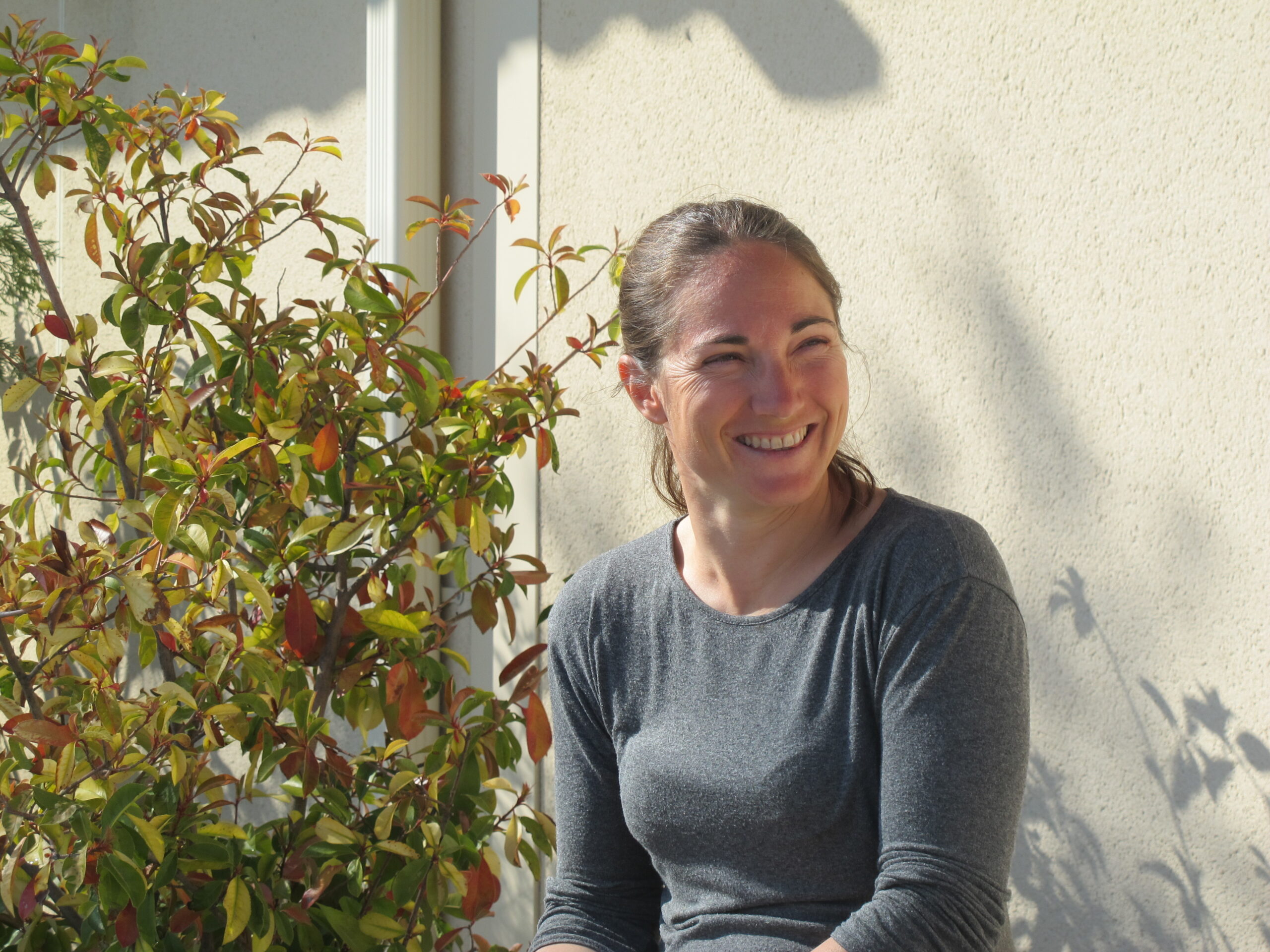
Interview with Elodie Balme via Zoom 5th June 2020.
Edited for clarity and brevity.
How did you find yourself working in wine?
I was born into it; my parents took their grapes to the cave co-operative. I always knew I wanted to work in wine, but I didn’t see myself only working in the vineyard for my whole life, so I studied the commercial side of wine for 2 years after the BAC, then I did a diploma in winemaking. After that we decided to build a small winery, to work on 3 or 4 hectares, and to continue with the cave co-operative at the same time.
So the vineyards that you work today, they are family vineyards that belonged to your parents?
It’s the vines that my father worked himself, and since then I’ve bought a hectare and a half in Rasteau when it passed into Cru. But it’s mostly the 27ha that my father had.
Do you have any brothers or sisters?
I have a sister; she has a bookshop in Vaison. The vines, the cellar, they've never interested her.
Have you ever felt responsible to take on the family vineyard?
I was lucky because I’m passionate about wine, it’s interested me since I was very young. But I felt responsible too, because it’s a family business, even if it was taking grapes to the co-operative, these are vines that were worked by my grandfather, my parents, and even further back, and I didn’t want to be the generation that sold it all off, it would break my heart. My parents always supported me because I was interested, but they never pushed me, it was my own choice.
Most winemakers I know are men. Why is it more common for men to work in wine, to make wine?
It’s a historical thing, it’s because the job is difficult, physically difficult. But the job that I know is nothing like the work my grandparents knew. Everything they did was by hand, they didn’t have the tools we have today, they didn’t have tractors, the means to hire staff. But there are lots of jobs done in the vineyards that were always done by women, pruning, debudding, taking care of young plants, things like that, not physically challenging. But for women to take on an estate, to give it their name, to say ‘it’s my estate, it’s not my father's, not my husband’s, not my brother’s, it’s mine’ – that’s a bit more recent, as culturally… it would have drawn attention to them, it would have been unusual. It was more of a male setting. A woman would be more likely to feel judged.
Have you ever felt that people have been prejudiced against you, as a woman winemaker in the Southern Rhône?
Personally, I’ve never felt that I’ve been prejudiced against for being a woman. I’ve never felt that from neighbouring winemakers. People are more likely to be prejudiced when you’re young, like you don’t know what you’re doing or you have no experience. And also if you’re from elsewhere; if you’re a foreigner and you buy a domaine, people are more likely to watch what you’re doing. And because I was from a local family, it was logical that I should take it on, it didn’t shock anyone.
In France, I still hear people describing wines as ‘feminine’ and ‘masculine’, whereas in England it’s no longer as common as it was.
When I first started out everyone would ask me the same question, ‘do you think you make feminine wines?’, and really this question irritated me! I don’t make masculine wine or feminine wine; I just make wine! My wine! Simple as that. But now, I think I know what they meant by asking me that – because it’s true, it is a feminine style of wine after all. For me, feminine wines – which can be made by men too – are wines which are less extracted, less austere. We know what it means.
And how could we describe your style of wine compared to others wines of Rasteau?
You could say it’s feminine, it has fine tannins, it’s less extracted, it has less heat, it’s better balanced – I’m not saying others’ aren’t good, it’s not a quality judgement! – but I think my wines are more accessible than lots of others from Rasteau. With Rasteau terroir, you can quickly have a lot of heat in the wine, quite marked tannins, great quality but pretty massive wines, and with feminine wines – like mine perhaps – there’s a bit less of that, they’re less pushed in that direction. In Rasteau there are some other women winemakers that make wines in that style, a bit like mine, more accessible, more on the fruit, less austere. But there are men who make wine in a feminine style in Rasteau as well – so is it in fact a more modern style, more than something that’s feminine or masculine?
For example, Domaine Mikael Boutin, it’s a small domaine in Rasteau, and a bit like mine, his wines are very accessible, velvety, without coarse tannins – so I find his style rather feminine. There’s nothing particularly feminine in his manner… is it a question of character or generation? That’s possible too. And Domaine Gramiller – lots of depth, but freshness at the same time, that drink well in their youth, you don’t need to keep them. So perhaps it’s more a question of generations than of men and women.
To buy a copy of my latest book, Wines of the Rhône, please click here.
Interview with Denis Alary, Domaine Alary, Cairanne
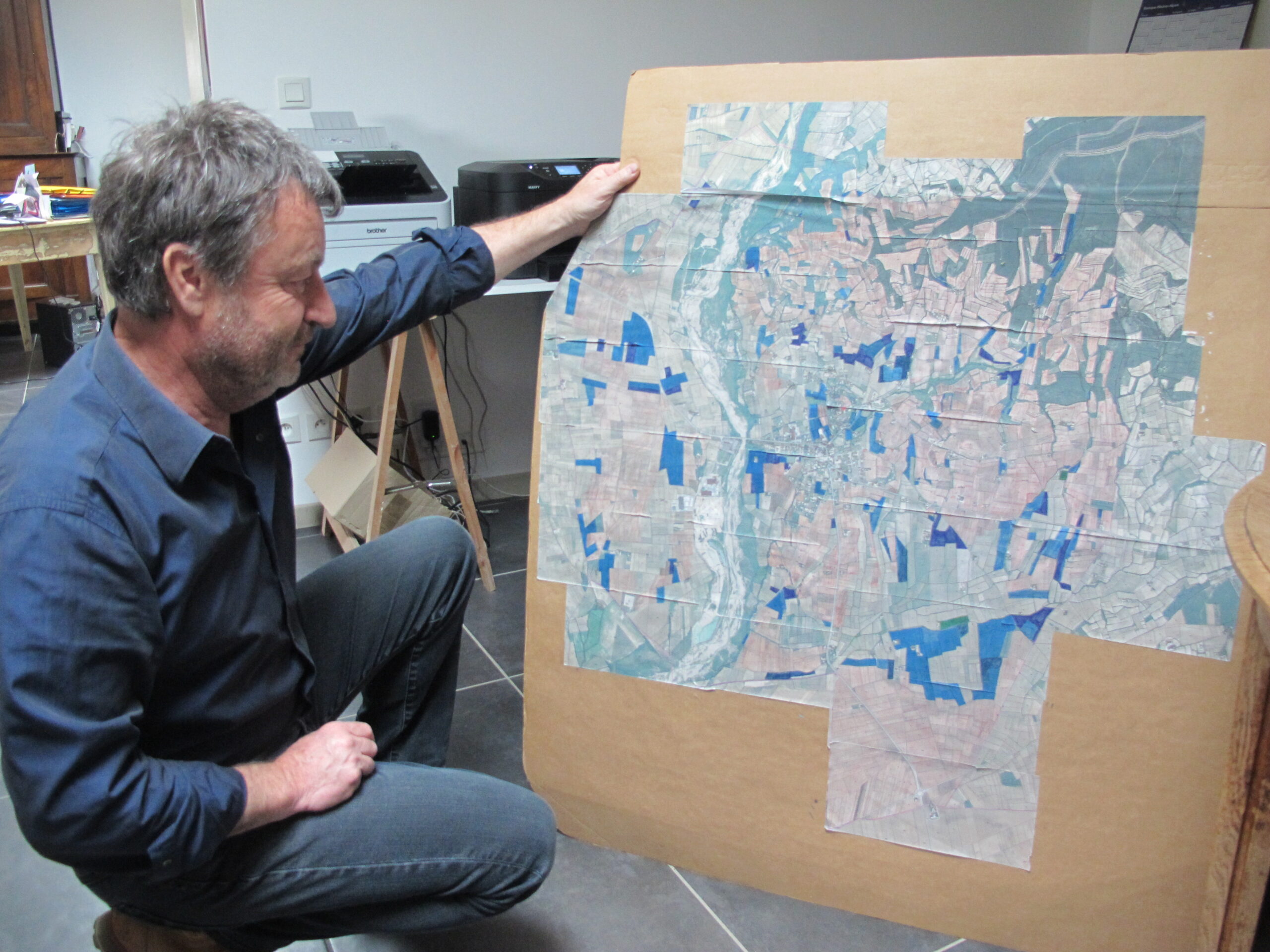
Interview with Denis Alary at Domaine Alary, Cairanne 10th June 2019.
Edited for clarity and brevity.
Tell me how you went about promoting Cairanne from named village to cru.
We had to make a delimitation of the growing area, and put together a cahier des charges that reflected our history and an idea of how we made wine. We made the decision in 2006. In 2007 we put together our dossier. It took a year and half, we did it all ourselves. We put together a number of working groups with 7 or 8 people in each: History, Technical, Terroir, Wine, all to characterise our appellation. We presented it to the INAO in 2008. It was accepted straight away.
In the minds of many winemakers we were already a cru.
We put together a cahier des charges that wasn’t entirely economically-based. Normally they’re based on making the appellation economically viable, but we didn’t do it that way. We said ‘we have a product, and we want to keep it this way. We have soils and vineyards like this and we want to keep this tradition.’
We based our cahier des charges around this. It did cause problems. We didn’t want to destroy the hillsides with our old bush vines, and to do this there’s only one solution – to ban machine harvesting. Firstly, the vineyards aren’t set up for that. And we didn’t want to pull out trees so the machines can turn around. It’s to protect our landscape.
We wanted keep things as close as possible to how our ancestors made wine.
And why did you restrict the level of sulphites permitted?
We discussed this for a long time. eventually we agreed to take the maximum amount for organic viticulture. If you treat the grapes well, you don’t harvest with machines, so there’s no juice you can use less sulphites. Ten or fifteen of the domaines had been trying this for a long time, I’d been using small doses for a long time since going organic, so knew it could be done.
But why is it important to decrease sulphite levels?
Because when you put in too much sulphur you lose fruit, you dry out the wine, and one thing I notice straight away is that it gives me a headache, and it burns my stomach. And I’ve met a lot of people who are allergic. So we decided to be an example to other appellations. It’s to be as natural as possible.
We have three rules in fact. The first is for the health of the vineyard – reducing herbicides. The second is for the health of consumers – less sulphur. And the third is for quality and our landscape.
And thirdly, reducing herbicides?
Yes, it’s forbidden to spray herbicides over the whole vineyard. Around 13 years ago when we started the process we envisaged a 100% organic appellation. But we realised it would be a bit complicated, and we’d risk not succeeding. But it’s important for the microbiological life in the soil. In Cairanne there’s now 30% of the surface is in organics. In Côtes-de-Rhône it’s 10%. And several more estates are moving in that direction.
We’re a village that compares our work a lot. There’s a wine bar called the Tourne au Verre. Thirty years ago, we used to do a tasting every Friday, three domaines each time. everyone would come and taste, and we taste all the tanks – the best and the less good ones. And then we’d discuss. And we’ve always done a lot of parcel selections, lots of small ferments. And that helped us see which variety, which year, which terroir, which vinification, to see what worked and how it was done. And we discussed blending a lot. Cairanne is a bit of a mosaic of terroirs, and each terroir has its own particularity and can work well in the blends.
To begin with, did the INAO cut a lot of the terroir out of the appellation?
Yes, they cut a lot. To start with. 500 hectares. But we had to defend it as much as possible. We weren’t allowed to meet the experts from the INAO though, I met them twice during the entire process. There was lots of discussion for nearly 5 years. Eventually we went from 1300ha to 1088ha. The delimitation was the hardest bit, I knew on a human level it would be hard.
Were there some growers that were hit particularly hard by this?
We had to find a solution so that everyone could make a living. Those who were particularly affected were labelled as priority cases for buying vineyard land with the SAFER… And all the vignerons know each other. When you don’t know people personally it’s easier… when you know people personally, it’s more difficult.
And for 5 years we had a derogation – it gave people the chance to replant if they didn’t have the correct varieties to secure the appellation.
And how would you describe the style of Cairanne just in a few words?
We tend to use the word elegance. We don’t overextract. We try to have a wine that’s fruity, supple and elegance, with silky tannins. That’s why kept at least 50% of Grenache. It’s good, it’s silky, it’s round, it’s supple. That’s what makes Cairanne great.
It’s a bit like Rasteau, but they’re more concentrated.
And is there a difference in the viticulture and vinification between Rasteau and Cairanne?
There’s more extraction in Rasteau, more infusion in Cairanne.
Why?
They already made VDNs [Vins Doux Naturels], and that’s one of the great riches of Rasteau. But making VDNs obliged them harvest later, to get the right percentage of sugar. This gave them a generous, powerful style of wine. Some are starting to dial it back now, like Domaine La Soumade. It’s a lot of old vines, a lot of extraction, and it’s also habit.
We’re more used to work on the finesse, on the silkiness. Our terroir gives us less concentrated wines, and it obliged us to concentrate more on finesse. And lots of us in Cairanne love Burgundy!
And what’s the future for Cairanne?
Me I’m an optimist. We need to stay passionate, pushing further in quality without quality without looking for overly technical solutions. But that’s up to the younger generation.
To buy a copy of my latest book, Wines of the Rhône, please click here.
Interview with Pierre Clape, Domaine Clape, Cornas
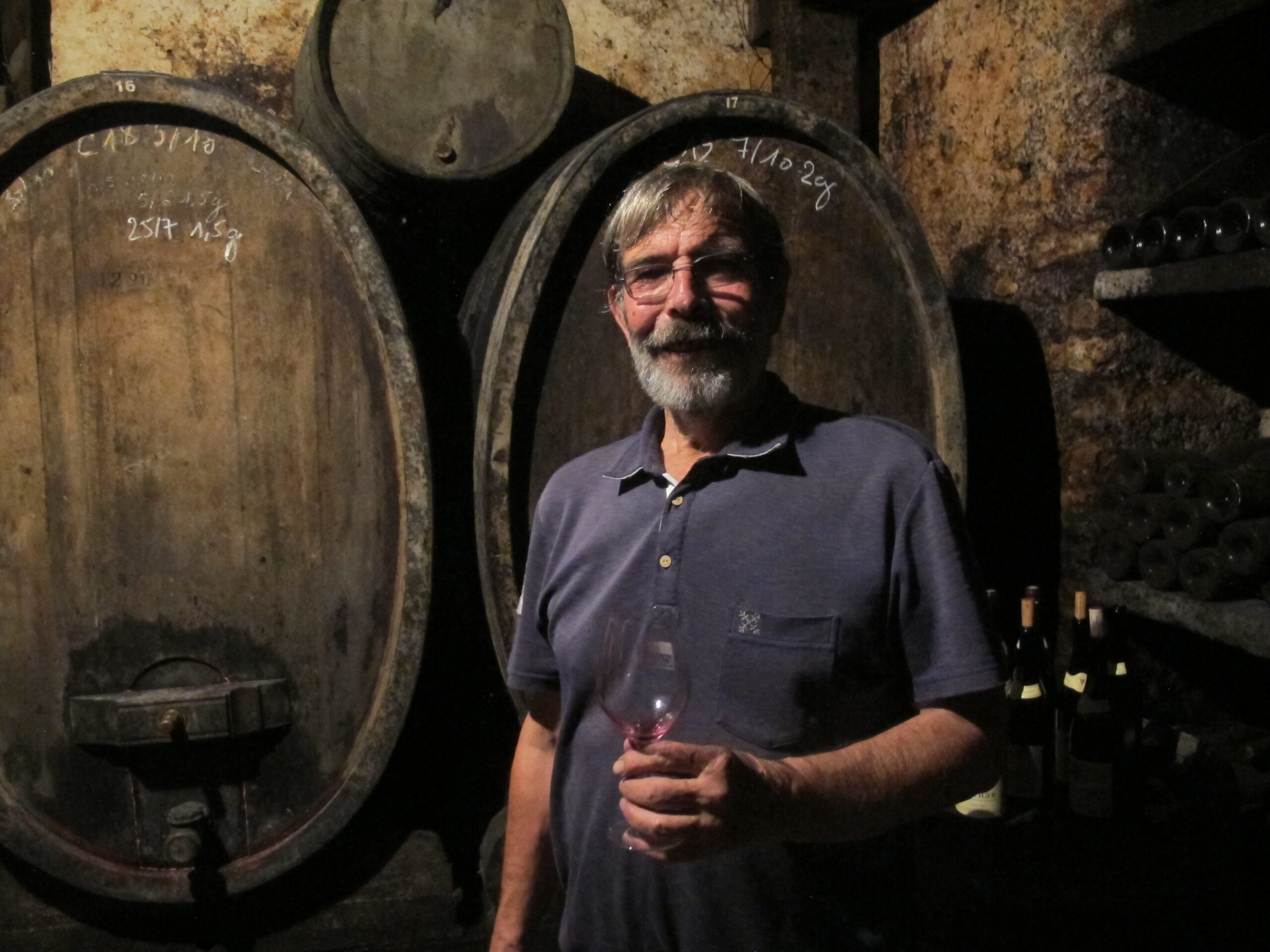
Interview with Pierre Clape, 9th March 2020 at Domaine Clape.
Edited for clarity and brevity.
The history of Cornas is less well known than that of Côte-Rôtie or Hermitage, why is that?
I think because it’s less well documented, we just don’t have that many documents. The first we have that mentions Cornas is from the 1760s, a village priest writes that when he arrived in the village, the whole hillside was planted with vines, and it gave ‘a very good black wine’! And we’re on an ancient Roman road here with a few Roman villas along the way. People have found relics, but nothing that points specifically to winemaking.
So it’s possible that Cornas has the same long history as Côte-Rôtie and Hermitage?
I think as long as Côte-Rôtie, and probably as long as Hermitage. More recently, phylloxera passed through here and the vineyard was almost totally destroyed, practically nothing remained. But it was replanted straight away by grafting. The whole of Cornas was rapidly replanted, all the slopes, we have terraces on Reynard that date back to 1890, 1900, with vines of the same age. The walls were rebuilt with stone that came from much higher up, not granite from Cornas, much harder granite from further away.
Was it always just Syrah planted here?
Before phylloxera? Yes. And after they planted a bit of Alicante Bouschet – grapes that are quite productive and deeply coloured, and Grand Noir too, that’s quite close to Dureza. At the start of the First World War, they produced 12,000hl a year in Cornas – today we get to 4 or 5,000hl in very good years! It gives you an idea of the work that was required to replant all those vines. The decline started after the First World War, and really the big decline happened after the Second World War… With the Marshall Plan the economy restarted and there was an enormous amount of work in Valence. Working in wine didn’t bring in enough money, it was very poorly paid, people couldn’t afford to eat. Wine was superfluous.
My dad arrived here in 1949. He said a kilo of wheat on the plain was more expensive than a litre of wine from the slopes. So, bit by bit, they were abandoned. People found the work too hard, and there was plenty of work in Valence. And it continued to decline, the surface area went down to 50ha in 1955, 1960. A few vignerons stayed, which was the case in a lot of Rhône appellations, like Georges Vernay in Condrieu.
Who were the most notable vignerons that stayed here?
There was Robert Michel’s dad, Joseph Michel. There was the Voge family. Marcel Juge. My dad [Auguste Clape]. Jean Lionnet.
When did bottling start?
My great-grandfather bottled a little bit, but just for himself, around 1906. But it was with the Marché aux Vins, that started in 1955 or 1956. Georges Bessenay was an accountant but he also had vines and really believed in Cornas, he started the market. At the time he also found a few vignerons in Crozes, Saint-Joseph, and everyone bottled the contents of a barrique, they didn’t know if they’d sell it or not. But they practically all sold all their wine. And next year they bottled a bit more, and so on. And every market served to get Cornas a bit better known, and also the neighbouring appellations of Crozes and Saint-Joseph.
And now you can find Cornas for 100€. Was there a time when the prices started to go up quickly?
The 1990s… 1986? My first vintage was in 1988, and prices then were still quite sensible, then they started going up a bit in Hermitage, Cornas, certain slopes in Saint-Joseph – it’s expensive to produce on the hillsides, so they had to, otherwise it’s not worth it!
What caused the price increases?
We didn’t have negociants here like in Tain L’Hermitage who help to ‘pull the plough’. Things started a bit from export, with the first edition of John Livingstone-Learmonth’s book, I think it was 1978, he helped Rhône wines get better known further afield, it was published in the United States and Northern Europe. It was at that time, ’78, ’80, that we saw people arriving with John’s book under their arms!
To buy a copy of my latest book, Wines of the Rhône, please click here.
Interview with Michèle Aubéry-Laurent and Maxime-François Laurent, Domaine Gramenon
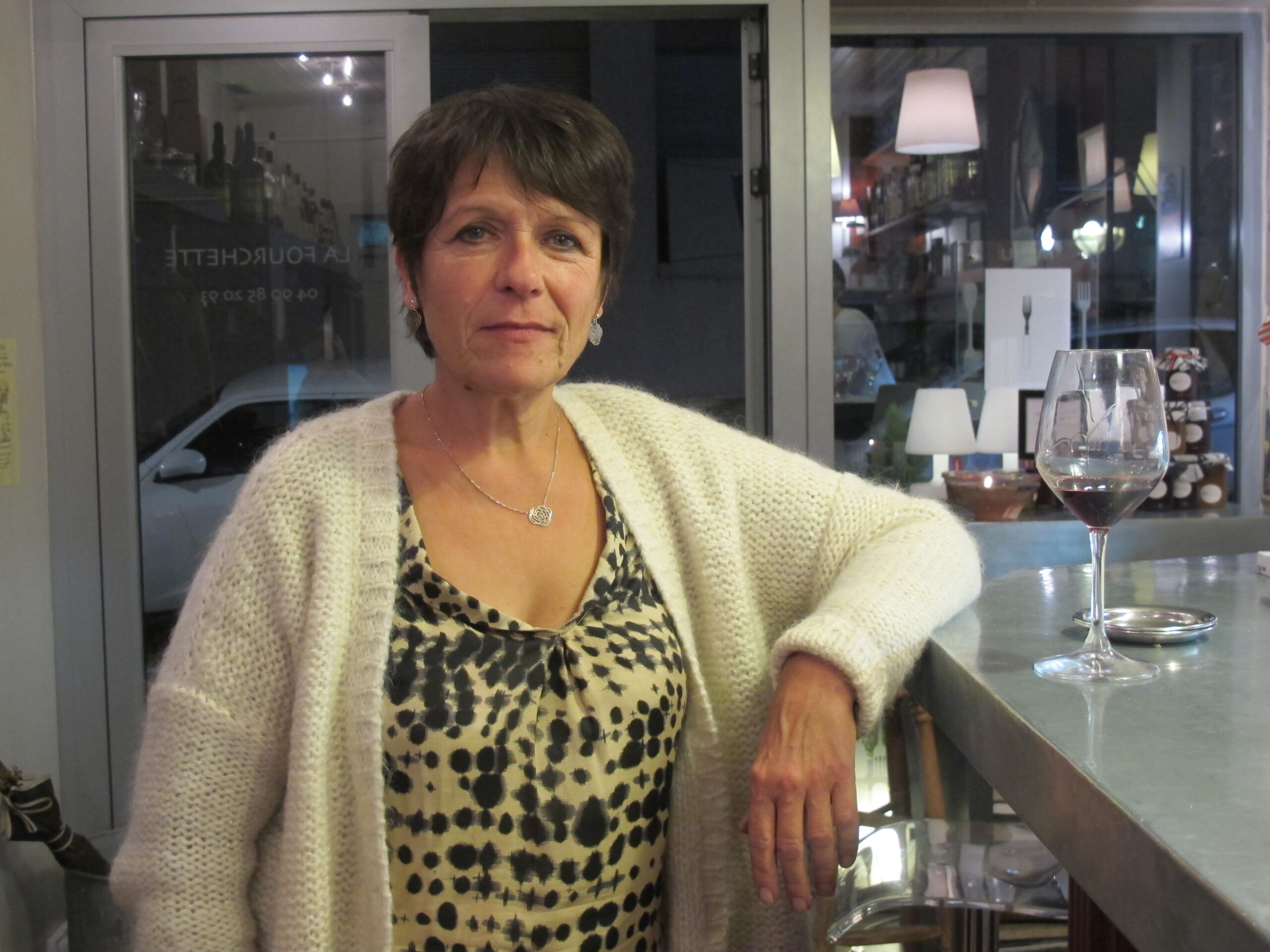
Interview with Michèle Aubéry-Laurent and Maxime-François Laurent at Domaine Gramenon, 7th February 2020 at Domaine Gramenon.
Edited for clarity and brevity.
How would you describe your wines? Are they Natural wines, or is that the wrong term?
Michèle: The problem at the moment is lots of people are making Natural wines, but not in the same way. So let’s talk about our definition. We started with organic viticulture a very long time ago, from the start, 40 years ago. Then there’s the fact that we make wine without additives, except a small amount of sulfites – after the malo, only if necessary. But we nonetheless consider ours to be Natural wines. Some people make wines without sulfites but add acid, or practice harsh filtration and they say it’s Natural because there’s no added sulfites… Natural wine is making wine as naturally as possible, as far as your place will allow. Sometimes if you don’t add a gram of sulfur the wine will turn to vinegar – for some that might be a tiny bit more ‘natural’ – but it’s no longer wine.
Maxime: That’s it – organic grapes, produced with care. And we shouldn’t prohibit a little dose of sulfur in order to make wines that are clean, fruity and precise. We don’t want to make faulty wines. We have a terroir that we’ve been respecting for 40 years and we don’t want to mask it by making wines that aren’t Natural, adding yeast, high yields and all that. But it can also be masked by making Natural wines if they have Brett or volatile acidity so you can’t see the terroir underneath.
Do you always add sulfites to your wines?
Michèle: Sometimes we can avoid it, but now, with the changing climate, it’s more difficult. Twenty years ago, we could make wine without adding sulfites no problem, but it’s not like that anymore.
Maxime: The climate is changing. Alcohols are higher, we’re working with natural yeast and it’s getting harder for them to process all the sugar. We have acidities that are lower and lower, and the acidity helps to protect the wine. If there’s less acidity then bacteria can develop more easily.
So it’s getting harder and harder to make Natural wines in the Rhône due to global warming?
Michèle. That’s right.
Have co-operative cellars had a good or a bad effect on the region?
Michèle: Economically they’ve had a good effect, people have had a place to sell the grapes they’ve grown, but qualitatively less so, because it’s made a standardised wine. They’ve created an idea of what wine should be that’s hard to escape from.
Lots of people are leaving co-ops. Is the era of the co-op on its way out?
Maxime: In our region, co-ops are still hugely important. Lots of vignerons have their vines but they don’t know how to make wine. And they enjoy all the benefits of the co-op. Around here, people really see themselves first and foremost as grape growers.
Michèle: And they don’t believe in themselves, there’s a lack of confidence. They don’t often get to visit other regions.
What changes in the climate have you noticed?
Maxime: Summer temperatures, even spring temperatures have increased. We harvest now a month earlier compared to when we started. We used to harvest at the start of October, now it’s around the 7th or 8th September, even August in extreme vintages. And now we’re having dry years that following each other. We used to have one every once in a while, but we had 2003, 2004, 2005, 2006 – four very dry years. Then it started again in 2017, then 2018, 2019.
What is being done in the region to fight climate changes?
Maxime: Nothing that I’m aware of.
Michèle: I think it’s too late now.
So how is the future looking for the region?
Michèle: I think it’s looking difficult. At tastings, people don’t often want to look at Côtes-du-Rhône wines. It has a reputation for heat, high alcohol, people think of big business, big co-ops…
Maxime: That’s right. It’s not looking easy.
To buy a copy of my latest book, Wines of the Rhône, please click here.
Interview with Louis Barruol, Château de Saint Cosme, Gigondas
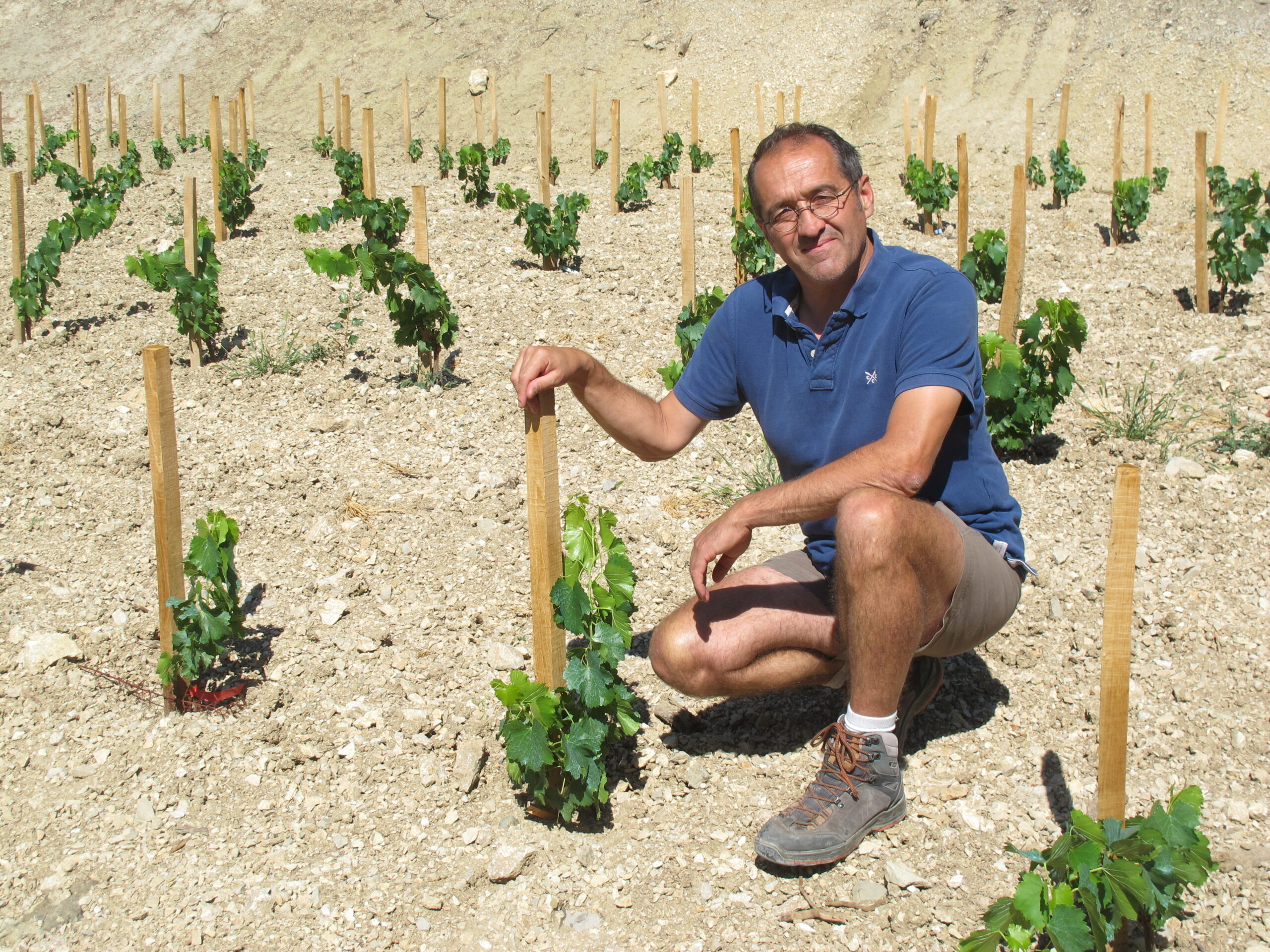
Selected excerpts from an interview with Louis Barruol of Château de Saint-Cosme 2nd September 2019
How has the 2019 vintage been?
We’re in a hot year, very dry, and that never makes the best vintages… But it could be a year like 1988, a year like that with a small harvest when the wines have – after ageing – become extraordinary.
A vintage for collectors perhaps?
For people that drink Gigondas wines as they should be drunk. Drinking Saint-Cosme before 9 or 10 years of ageing, it doesn’t make much sense. I don’t work for people that want to drink wines from the get-go, I work for my terroirs, and they show well after 9 or 10 years… Of course, you have to listen to what consumers want to a certain point, but constantly following what people want, it’s the opposite of the winemaker’s job, who’s there to understand under what conditions his terroir best expresses itself.
What are your thoughts on oak use?
I trialled old oak, foudres, demi-muids, tronconic, new, old, concrete…and we came to the conclusion that our wines are at their best with 25% new barrels, 25-40% 1-year-old, 20% 2-year-old, 20% 3-year-old. I stick to what expresses my terroir at its best.
Is there a gap between how most consumers drink Gigondas, and how you think they should be drinking Gigondas?
I think that 90% of wines at least are drunk too young. You miss the complexity, you miss the mellowness, you miss the ‘friendly’ side of wine… In a great old wine, it’s no longer the grape variety that you taste, but the soil. In a region like Burgundy, it’s accepted. Or if someone drinks a bottle of Château Haut-Brion 2017 now everyone would say, ‘listen buddy, if you wait 15 years, you’ll get much more emotion than you’re getting from it now’. But in regions that are still establishing themselves such as ours, relatively few people have the knowledge to say ‘hang on – that great Gigondas shouldn’t be drunk yet.’
Do other estates in Gigondas make wine to age?
There is the return of whole bunch fermentation, and that’s not really in the spirit of making wine to drink young. I think it’s a good thing to at least explore the realms of quality and style that stalks – ripe stalks – can bring… Obviously, when using whole bunches they need to come from healthy plants, with genetic diversity, and often old vines because they have finer stems that can bring an architecture to wine without hardness. I think that whole bunches give remarkable complexity, a lot of soul, spirit, a particular architecture, a particular texture, a particular freshness.
Is the fact that Gigondas wines are often drunk too young down to them being based around Grenache?
I think Châteauneuf-du-Pape, paradoxically, is a wine you can open a lot earlier than Gigondas, or at least Saint-Cosme. After 5 or 6 years, a lot become expressive. And it’s a question of geology. Their soils give rounder Grenache, with softer tannins, that’s friendlier in youth.
What are your interests outside wine?
I’ve got two great passions outside of wine, and they are also artistic – because for me wine is an artistic activity – and that’s rugby and music. I was still playing rugby in competitions until I was 48. It’s a bit mad, but there we go.
What’s the future for Gigondas?
I’d like to see an appellation that respects its history, its past, the reasons for which it has already reached a certain level. An appellation that respects its viticultural heritage, because that’s the base of all viticulture – great plant material, in good health, with good genetic diversity. I’d like it to be an appellation that looks after its old vines, an appellation where people keep their humility, one where people keep their will to progress and improve.
And does anything worry you?
I think money might start getting easier to come by now, and that’s a factor which can eventually be negative… the easy life is less likely to give the taste of effort. That worries me a bit. I don’t want to see people lose the taste of effort in their wines.
To buy a copy of my latest book, Wines of the Rhône, please click here.


